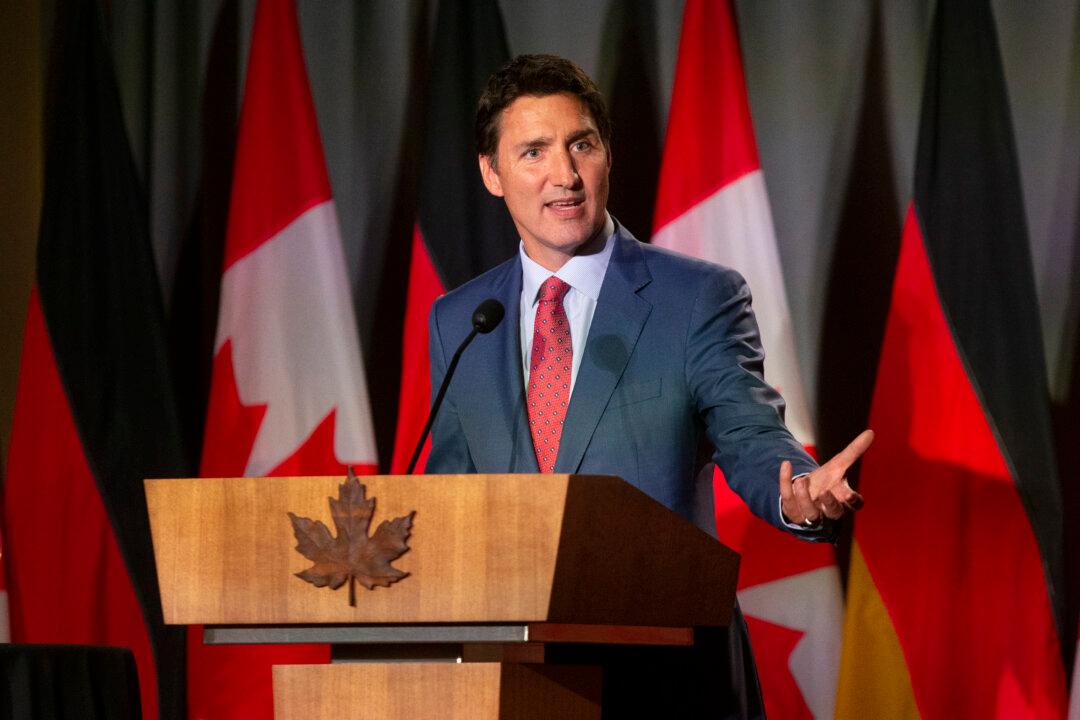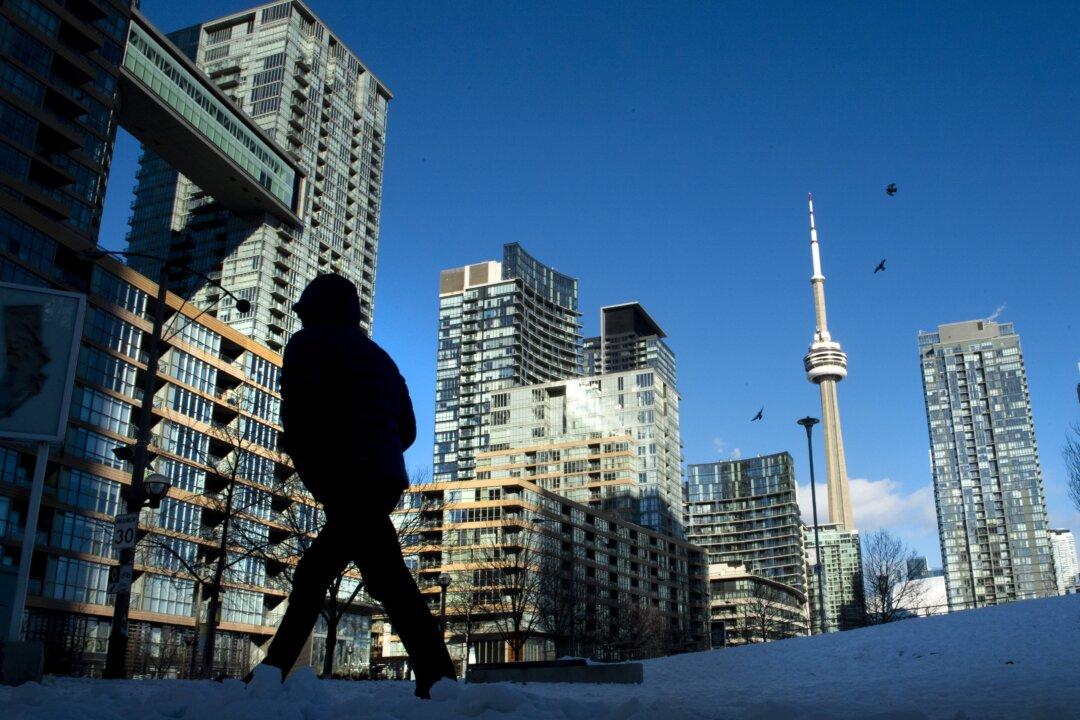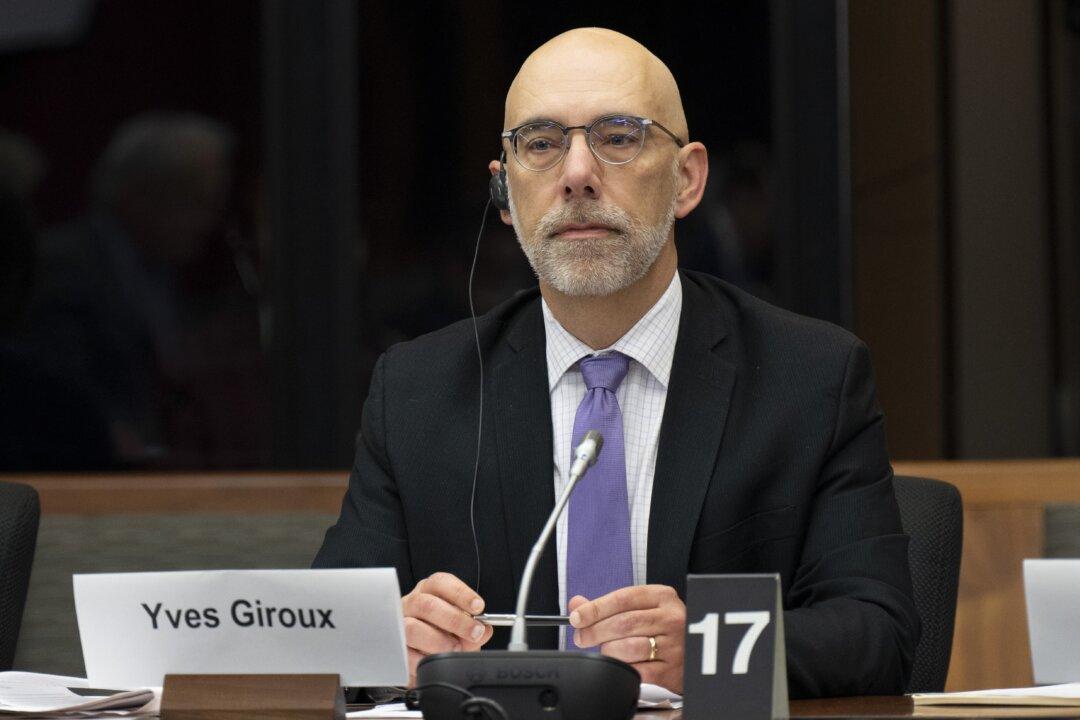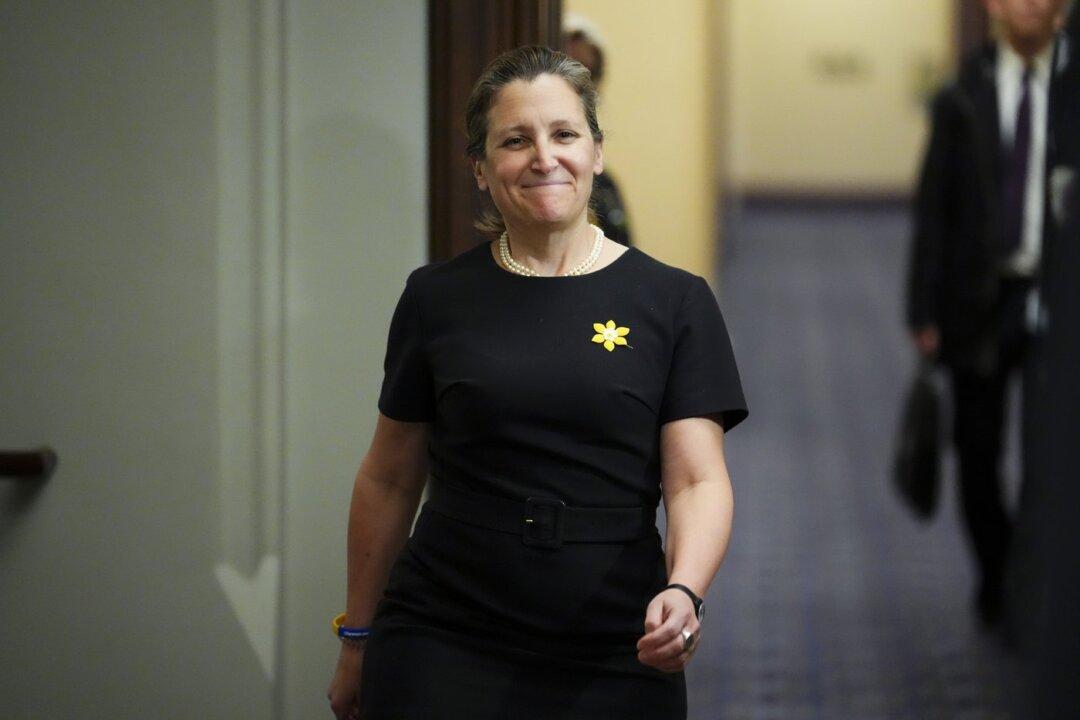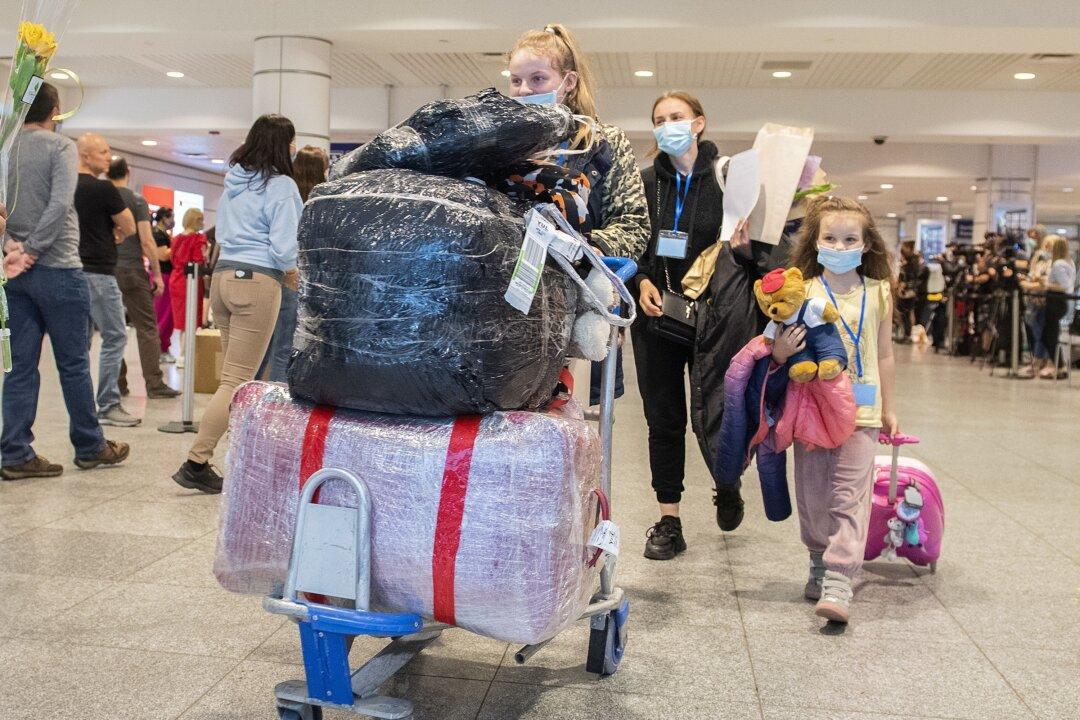Prime Minister Justin Trudeau is not committing two percent of Canada’s gross domestic product (GDP) to national defence spending—as NATO asks its member countries to do.
Trudeau, who was visiting an Alberta air force base along with NATO Secretary General Jens Stoltenberg as part of his Canadian Arctic visit, answered indirectly to a reporter asking if Ottawa would make any “promises or assurances” to meet NATO’s minimum military-spending goal.
